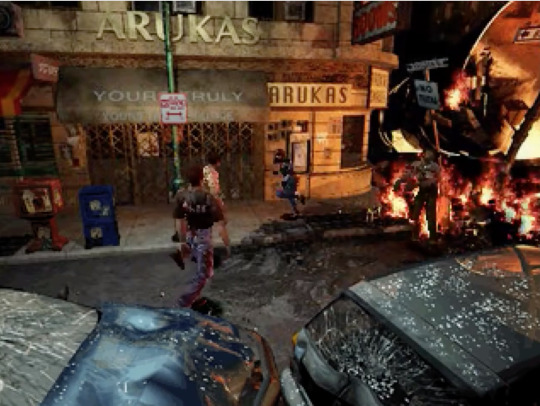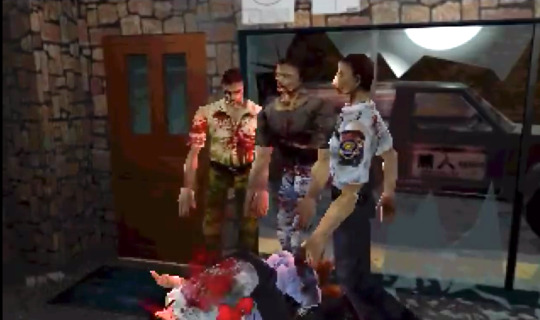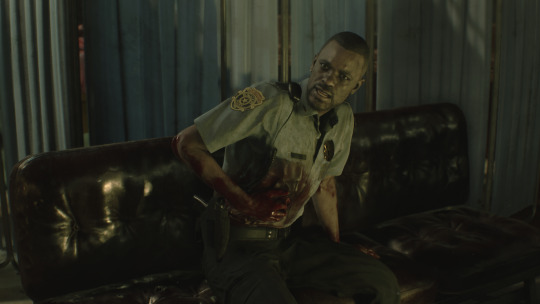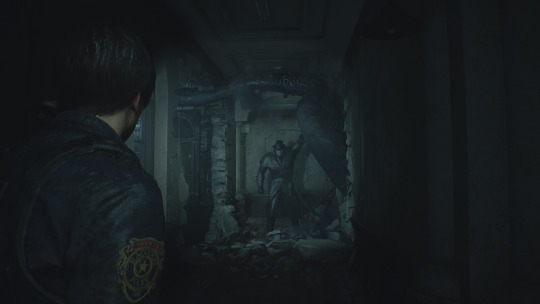#also worth noting that a lot of this is tangled up with my very-concurrent experiences with chronic illness
Explore tagged Tumblr posts
Text
Here's what I'll say regarding choice of worship music (and I'm not 100% sure where I'm going with this, so bear with me): I think it's very easy to get burned out on specific kinds of worship, no matter what they are. And that kind of burn-out is hard.
I grew up at a church that did 95% CCM for worship, and after a while it either (a) exhausted me emotionally or (b) bored me. By the time I hit high school, I really really struggled with corporate worship because it felt as though I wasn't responding as I was supposed to. Getting to sing mostly hymns at the church I attended at college was a huge breath of fresh air, and it helped me immensely in terms of re-orienting my heart towards Christ-centered worship (as opposed to me-centered worship.) For the first time in my life, I found myself listening to Christian music on my own time during the week.
I watched the recent Jesus Revolution movie with mom over the summer. Her family started attending Calvary Chapel (then-nascent hippy church in Orange County) midway through her childhood, and she got really excited talking about the difference between the hymns she remembered from early elementary school ("we sang the whole hymnal rather than selecting for the really good ones like they do at your church") and the much more dynamic music that came out of Maranatha and other early "contemporary" Christian groups. She actually played me a whole bunch of the songs she grew up with the next morning. They sounded horrifically cheesy to me, but she got real joy out of it and even ended up texting a few songs to my aunt.
And yet, my mom has remarked a whole bunch of times to me that she really can't stand current CCM; that she desperately misses singing the old hymns. I look at myself and my own experience and I can totally see myself coming back to some of the CCM songs I grew up with and encountering Christ through them all new again. As recently as last month, I had a really beautiful experience driving back from a concert crazy late at night with my sister and listening to some of the old Chris Tomlin and Hillsong stuff that I hadn't heard in a while. It brought me back to a sense of incredible comfort and safety nestled up against God like a baby chick. Do I want to worship with that sort of music every week right now? No, definitely not. But it has its place.
Obviously worship transcends something as incidental as music genre. It's an expression of why we were created: glorifying God and enjoying him forever --- and yet, because of the fall, it's really easy to get burned out on specific expressions of worship. I don't necessarily think that's a bad thing so much as just a symptom of the fall. I also think that people who are really burned out on a particular kind of worship can be really, really obnoxious about it. I know I was for a while, and I still definitely have my hangups with CCM.
But like- I don't think it's so much about judgement or superiority towards the kind of worship music that you're burnt out on as it is just the overwhelming sense that that kind of worship music felt exhausting and this kind of music actually feels like I'm able to worship again. I know when I started singing hymns at church, it just felt like I'd found the Rosetta Stone. I was suddenly so much less in my own head on Sunday mornings and oh my goodness singing to God was a joy again and I can't remember but I don't think it's ever been a joy like this before has it?? It was almost like my head was spinning with some great new revelation and when I was obnoxious about it it was mostly a manifestation of my being like Why didn't anyone ever tell me it could be like this? Why isn't everyone singing hymns? It's just so much better this way!
Mostly, it just feels like saying "don't be overly critical of how other Christians like to worship" kind of. Misses the trees for the forest, if that makes sense? Like, it's accurate to the big picture, it's absolutely a true and worthwhile thing to say. But at the same time it kind of rankles for me because it misses how it feels to be truly and deeply alienated by the kind of worship you're exposed to.
For better and for worse, worship is (I think) the spiritual discipline that engages the emotions most directly. The feeling of being in a group of people all worshipping together, and your heart just isn't responding right no matter how you try to re-focus and orient it? It's one of the loneliest feelings I know.
#long and rambling#what else is new#I've been chewing on a couple of the worship posts floating around (from liz kaylie and ella? i think?)#they're all very good and true posts and yet i was having sort of prickly reactions to them#not defensive exactly so much as just. hypersensitive? idk#so I've been mulling and this is what I've got on the subject#also worth noting that a lot of this is tangled up with my very-concurrent experiences with chronic illness#and all the grief and emotion-in-God's-direction thereof#anyway#only thou art holy#pontifications and creations#sunday school kid#unproofed. if there are any big errors I'll fix later. it's crazy late and i should not be posting on Tumblr#do please chime in if you've had similar experiences and let me know I'm not crazy lol
76 notes
·
View notes
Text
Resident Evil 2 reflections

One crisp winter evening in early 1998, my friend “Kyle” sat me down on the floor of his room, which was twice the size of my room, and fired up his Sony PlayStation. “You aren’t going to believe this,” he said.
He’d said that a lot over the past several months, usually in regards to something happening on the Sony PlayStation, and usually he was right. He’d shown me Resident Evilfirst, always calling it “Res Eve,” and it had shaken my very idea of what a video game was. Real actors? Real voices? Real emotions? Indeed I could not believe that something as juvenile and recreational as a video game had actually scared me. But the efficacy of that first zombie head-turn was undeniable.

In the following months Kyle had shown me a Top Gun game with live-action cutscenes featuring the bald principal from Back to the Future; the original Dynasty Warriors, which was a 3D fighting game; Mortal Kombat Trilogy; and the Sephiroth fight from Final Fantasy VII where he destroys the entire solar system as a canned attack animation. It’s amusing in hindsight that these titles could ever have been lumped together in any capacity, but each of them was such a fundamental upset of my existing notion of video games* that it was initially impossible for me to discern any gradient in quality. With the exception of the live-action bits, I couldn’t even discern FMVs from in-game cutscenes, because neither concept had existed in my head at all. It was like if you’d gone back in time to the dawn of the industrial age and shown someone The Godfather and an episode of Married with Children back-to-back. However briefly, there’d be a moment where their reaction would be roughly the same to each: “THE PICTURES ARE MOVING AND TALKING.”
*Okay, MK Trilogy didn't exactly break new ground, but it made me realize my kopy of Ultimate Mortal Kombat 3 on the Genesis wasn't very ultimate at all.

↑↓ Keep in mind I saw these two things on the same day, prior to which the most visually impressive thing I'd ever seen a game do was accurately render comic strip characters (Garfield: Caught in the Act, I'm looking at you).

On this crisp, winter evening in 1998, Kyle showed me Resident Evil 2, which had only just released. We sat and watched the Leon intro in silence. There’s a very special stillness, an eerie electricity to the original RE2 intros that reminds me of the ominous feeling of the air and the sky before a big thunderstorm. It’s the same feeling I get when I watch the closing moments of the Who Shot Mr. Burns? Episode of The Simpsons, that sparse tension that is equal parts quieting and disquieting.
I watched, transfixed. Finally, the game relinquished control to Kyle, and he ran through a fiery city street teeming with zombies. Their numbers seemed to fill every shot. Everything was wrecked and burning and overrun, a fruition of the thing the first Resident Evil only hinted at while locking you inside that mansion.

Kyle ducked into an apparent safehouse and was immediately—seamlessly!—halted by a suspicious shopkeep with a shotgun. A dramatic, fully voiced conversation ensued, the shopkeep backed off, and Kyle was given freedom to explore the room until suddenly—seamlessly!—the horde crashed through the false security of the shop’s window glass and ate the screaming shopkeep alive, blood fountaining from his red-stained neck and torso. You know the rest.
I walked home for dinner at dusk, looking back over my shoulder every few feet, and marveled that a video game could generate such real-life fear.

I got my own Sony PlayStation about half a year later and devoured both RE2campaigns within three days. By the end I was as much a survivor as a player, and didn’t entirely know how to reconcile the good time I’d had with the immense feeling of relief that it was over. To survive a prolonged immersion in terror is an emotionally complicated experience, and not one I’d been accustomed to associating with “play.” It struck me how much scarier RE2 was than even RE1. RE1 put danger in the obvious place—a big, creepy mansion; in RE2, the evil had spilled out into the streets and overrun society’s most guarded spaces—a gun shop, a police station. The voice acting, graphics, and environmental design were also significantly better than before. The point is that Resident Evil 2 was a special game, in large part because it did things early, but also because it did things well. It was the sweet spot of the original RE trilogy—it did things better than RE1, at a riper time than RE3.
I might’ve thought any attempt to recapture that magic would be futile, had Capcom not already proven the potential for such a thing in 2002 with the GameCube remake of the original Resident Evil, which was where much of the demand for an RE2 remake came from in the first place. The RE1 remake had very cleverly used the players’ nostalgia against them, subverting our expectations in all the most notorious moments. It also made modest but smart improvements to the game’s systems and drastic improvements to its audiovisual elements, and threw in a few meatier surprises. Basically it succeeded in an impossible aim: to make fans feel like they were replaying their favorite game for the first time.

For the most part, RE2’s remake is just as much of a triumph as RE1’s, combining state-of-the-art tech and thoughtful self-reflection to make the old feel brand new again. The police station is significantly altered from its original layout, and yet similar enough that you feel like you know it. The more rote, later sections of the original game have been given new personality and contour—the greenhouse and sewer sections both stood out as impressively reimagined. The characters, too, have been smartly rewritten to feel more like interacting humans than archetypal action figures. Each one of them bore impressive nuance rarely seen in a Capcom title but crucial for good horror, in my opinion.

The action seems to lean heavily toward the “survival” side of things, with even plain-jane zombies sometimes taking an obscene number of bullets before they stay down. I appreciate how this adds to the “dangerous” feel of the game, but I sometimes felt like it had lost a little bit of the fun factor I associate with the shooting action of the entire series. Still, I see this as a stylistic choice rather than a flaw, and they also give you a handful of unlockable infinite ammo rewards in the post-game so you can go for a more action-packed “victory lap.” (Note: @jbsargent taught me that term :D)
Mr. X is worth his own essay, but I’ll just say he was always one of my favorite things about RE2 and he’s absolutely my favorite thing about the RE2remake. I wouldn’t change a thing.

Shortcomings
I’d be remiss if I didn’t talk about the remake’s glaring mistreatment of the A/B campaign structure. The whole point of this game’s dual-protagonist hook is to show the unfolding of events from two separate but concurrent perspectives. Here’s what happened to Claire. Now here’s what happened to Leon. The remake sometimes gives us this—Leon deals with Ada while Claire handles Sherry and the police chief—but sometimes inexplicably puts Leon and Claire through the same events, implying that only one of these campaigns is happening. How else can you explain that both Leon and Claire witness, for example, Mr. X lifting the chopper wreckage to make his chilling debut? What point is there to an A/B campaign if they nullify each other? They may as well have done away with the “2nd Run” concept altogether and just let you pick the Leon story or the Claire story. This is one of those things that bothers me the more I think about it. It didn’t affect me very much in the moment, but looking back I don’t know what to make of the story at all. Who did what? The 2nd Run is slightly shorter than the first, but I would have been content with something even shorter if it meant a more coherent narrative.

They’ve also cut at least a couple of the moments from the original game in which Leon and Claire check in with one another, which I found to be enough to greatly hurt the sense of connection between the two characters. The moments when they do interact are great, but I wished there’d been a few more. They also speed through the intro movie on 2nd Run, employing a “Last time on 24”-like highlight reel instead of giving it the space it needs to establish the crucial atmosphere and character dynamics. I didn’t like that.
Camera placement is a debate that will probably never die in the Resident Evil community, and it’s hard for me to even decide where I stand on the matter. The use of fixed camera angles in the classic games was a stroke of genius that allowed the games to mimic the tried-and-tested techniques of horror film, but occasionally the shifting angles caused player inputs to get tangled, resulting in unintended frustration. The over-the-shoulder cam used in the RE2 remake and most other recent RE titles gives the player complete control over what they see. This is a much friendlier interface for the action sequences, but it also means the game can’t force you to look at anything. On my first playthrough, I missed four or five classic moments including the first appearance of Mr. X because I happened to be looking elsewhere when they occurred. I see this as emblematic of the sometimes conflicting aims of game design, where a game is both a plaything and a cinematic experience targeting specific emotions. I’m not sure there’s a perfect solution to this, but I appreciate that the game essentially operates like an autonomous ecosystem. If you miss the action it’s your own fault, but it’s true to life in that sense.

↑ This is actually one rare moment where camera control is taken away and you have to look. Gah.
I don’t think there’s any fair way to conclude that the remake is better or worse than its predecessor, but I’ll happily submit that Resident Evil 2 is the best game ever announced via T-shirt. I think Capcom can look back with pride and say, "WE DID IT."

#resident evil 2#re2#resident evil#video games#games#gaming#remake#capcom#reflections#review#criticism#leon#claire#leon kennedy#claire redfield
11 notes
·
View notes
Link
Building web services and smartphone apps, which is most of what I’ve been doing professionally at HappyFunCorp1 for the last decade or so used to be pretty straightforward. Not easy, but straightforward, especially when the client was a consumer startup, which so many of them were.
The more we did the better we got at it. Design and write two native apps, usually iOS first and Android second. Don’t skimp on the design. Connect them to a JSON API, usually written in Ruby on Rails, which also powered the web site. There’s always a web site; consumers might only see the side which is a minimal billboard for the app, but there’s essentially always also an admin site, to control features and aspects of the app.
Design isn’t as important for the admin site, so you can build that in something crude but effective like ActiveAdmin; why roll your own? Similarly, authentication is tricky and easy to get wrong, so use something like Devise, which comes with built-in hooks to Facebook and Twitter login. Design your database carefully. Use jQuery for dynamic in-browser manipulation since raw Javascript is such a nightmare. Argue about whether to use Rspec or Minitest for your server tests.
All there? OK, roll it out to your Heroku scaling environment, so you can simply “git push” to push to staging and production, with various levels of Postgres support, autoscaling, pipelines, Redis caching, Resque worker jobs, and so forth. If it’s a startup, keep them on Heroku to see if they catch on, if they find the fabled product-market fit, not least because it helps you iterate faster. If so, at some point you have to graduate them to AWS, because Heroku only scales so far and it does so very expensively. If not, well, “fail fast,” right?
Those were the days, my friends, those halcyon, long-gone days of (checks notes) five years ago. The days of a lot of grief, sure, but very little decision complexity. The smartphone boom was on, and the web boom was settling down, and everyone was still surfing those two tidal waves.
Today? Well, today we still are, neither of those waves have broken, per se, software is still eating the world, but things are … different. More of the world is being eaten, but it’s also happening more slowly, like growing 50% a year from a $1 billion base rather than 500% from $1 million. There are fewer starry-eyed founders with an app idea that they’re sure will change the world and funding enough to give it a shot. Those are still out there, sure, and more power to them, but the landscape is more complex, now.
Instead we see more big businesses, media and industrial and retail alike, realizing they must adapt and be devoured, experimenting with new tech projects with a combination of excitement and trepidation. Or requisitioning custom apps for very specific — but very useful — purposes, and requiring them to interface with their awkward pre-existing custom middleware just so. Or tech companies, even big household-name ones, outsourcing ancillary tools and projects in order to focus their in-house teams purely on their core competencies and business models. Our mix of clients has definitely shifted more towards enterprise in the last few years.
Which is not to say that startups don’t still come through our doors with bright ideas and inspiring PowerPoints on a fairly regular basis. As do super starry-eyed blockchain founders (granted, I’m sometimes a bit starry-eyed about blockchains myself) replacing the consumer-app founders of yore. I doubt we’re alone in having had a spate of blockchain startup projects late last year and early this, which has diminished to only a couple active at the moment. (Not least because the tooling is still so crude it reminds me of 90s command-line hacking.) But I strongly doubt that sphere is going away.
We haven’t dealt with as many AI projects as I would have expected by now, probably partly because AI talent is still so scarce and highly valued, and partly because it turns out a lot of seeming “AI” work can be done with simple linear regressions rather than by building and training and tuning deep-learning neural networks… although if you do those linear regressions with TensorFlow, it’s still “AI” buzzword-compliant, right? Right?
Most of all, though, the tools we use have changed. Nowadays when you want to build an app, you have to ask yourself: really native? (Java or Kotlin? Objective-C or Swift?) Or React Native? Or Xamarin? Or Google’s new Flutter thing? When you want to build a web site, you have to think: traditional? Or single-page, with React or Angular or Vue? As for the server — Go is a lot faster than Rails, you know, and oh, that elegant concurrency handling, but, oh, where is my map/filter/reduce? Javascript is still a clumsy language, but there are certain advantages to having one language across the stack, and Node is powerful and package-rich these days. And of course you’ll want it all containerized, because while Docker definitely adds another layer or two of configuration complexity, it’s usually worth it.
Unless you want to go fully “serverless,” at least for aspects, with Amazon Lambda or Google Firebase? Even if you don’t use Firebase for a datastore, how about for authentication, huh? And if you’re all containerized, and Kubernetized if/as appropriate, though maybe let’s not go the many-microservices route until you’re sure your product-market fit justifies it, then where do you want to roll it out, AWS or Azure or Google Cloud or Digital Ocean? Or do you want to use one of their PaaS services, like App Engine or Beanstalk, which, like Heroku, sorta kinda live between “serverless” and “bare metal virtual machines”?
I oversimplify, but you get my point. We’ve never had more options, as developers, more tools available to us … and we’ve never had to struggle more with analysis paralysis, because it’s awfully hard to determine which of the possible toolsets is the best one for any particular situation. Sometimes — often — we have to be happy with just selecting a good one. And that selection problem doesn’t look like it’s going to get easier anytime soon, I’m afraid. It’s a strange time to be a coder. We live and work all tangled up in an embarrassment of riches.
1Yes, that’s really our name. No, this TC column isn’t a full-time gig. (Which is something people frequently assume, because it’s so much more visible and to some people writing a column every week sounds like a lot of work, but no, I’m really a CTO.)
via TechCrunch
0 notes
Text
The tools, they are a-changing
Building web services and smartphone apps, which is most of what I’ve been doing professionally at HappyFunCorp1 for the last decade or so used to be pretty straightforward. Not easy, but straightforward, especially when the client was a consumer startup, which so many of them were.
The more we did the better we got at it. Design and write two native apps, usually iOS first and Android second. Don’t skimp on the design. Connect them to a JSON API, usually written in Ruby on Rails, which also powered the web site. There’s always a web site; consumers might only see the side which is a minimal billboard for the app, but there’s essentially always also an admin site, to control features and aspects of the app.
Design isn’t as important for the admin site, so you can build that in something crude but effective like ActiveAdmin; why roll your own? Similarly, authentication is tricky and easy to get wrong, so use something like Devise, which comes with built-in hooks to Facebook and Twitter login. Design your database carefully. Use jQuery for dynamic in-browser manipulation since raw Javascript is such a nightmare. Argue about whether to use Rspec or Minitest for your server tests.
All there? OK, roll it out to your Heroku scaling environment, so you can simply “git push” to push to staging and production, with various levels of Postgres support, autoscaling, pipelines, Redis caching, Resque worker jobs, and so forth. If it’s a startup, keep them on Heroku to see if they catch on, if they find the fabled product-market fit, not least because it helps you iterate faster. If so, at some point you have to graduate them to AWS, because Heroku only scales so far and it does so very expensively. If not, well, “fail fast,” right?
Those were the days, my friends, those halcyon, long-gone days of (checks notes) five years ago. The days of a lot of grief, sure, but very little decision complexity. The smartphone boom was on, and the web boom was settling down, and everyone was still surfing those two tidal waves.
Today? Well, today we still are, neither of those waves have broken, per se, software is still eating the world, but things are … different. More of the world is being eaten, but it’s also happening more slowly, like growing 50% a year from a $1 billion base rather than 500% from $1 million. There are fewer starry-eyed founders with an app idea that they’re sure will change the world and funding enough to give it a shot. Those are still out there, sure, and more power to them, but the landscape is more complex, now.
Instead we see more big businesses, media and industrial and retail alike, realizing they must adapt and be devoured, experimenting with new tech projects with a combination of excitement and trepidation. Or requisitioning custom apps for very specific — but very useful — purposes, and requiring them to interface with their awkward pre-existing custom middleware just so. Or tech companies, even big household-name ones, outsourcing ancillary tools and projects in order to focus their in-house teams purely on their core competencies and business models. Our mix of clients has definitely shifted more towards enterprise in the last few years.
Which is not to say that startups don’t still come through our doors with bright ideas and inspiring PowerPoints on a fairly regular basis. As do super starry-eyed blockchain founders (granted, I’m sometimes a bit starry-eyed about blockchains myself) replacing the consumer-app founders of yore. I doubt we’re alone in having had a spate of blockchain startup projects late last year and early this, which has diminished to only a couple active at the moment. (Not least because the tooling is still so crude it reminds me of 90s command-line hacking.) But I strongly doubt that sphere is going away.
We haven’t dealt with as many AI projects as I would have expected by now, probably partly because AI talent is still so scarce and highly valued, and partly because it turns out a lot of seeming “AI” work can be done with simple linear regressions rather than by building and training and tuning deep-learning neural networks… although if you do those linear regressions with TensorFlow, it’s still “AI” buzzword-compliant, right? Right?
Most of all, though, the tools we use have changed. Nowadays when you want to build an app, you have to ask yourself: really native? (Java or Kotlin? Objective-C or Swift?) Or React Native? Or Xamarin? Or Google’s new Flutter thing? When you want to build a web site, you have to think: traditional? Or single-page, with React or Angular or Vue? As for the server — Go is a lot faster than Rails, you know, and oh, that elegant concurrency handling, but, oh, where is my map/filter/reduce? Javascript is still a clumsy language, but there are certain advantages to having one language across the stack, and Node is powerful and package-rich these days. And of course you’ll want it all containerized, because while Docker definitely adds another layer or two of configuration complexity, it’s usually worth it.
Unless you want to go fully “serverless,” at least for aspects, with Amazon Lambda or Google Firebase? Even if you don’t use Firebase for a datastore, how about for authentication, huh? And if you’re all containerized, and Kubernetized if/as appropriate, though maybe let’s not go the many-microservices route until you’re sure your product-market fit justifies it, then where do you want to roll it out, AWS or Azure or Google Cloud or Digital Ocean? Or do you want to use one of their PaaS services, like App Engine or Beanstalk, which, like Heroku, sorta kinda live between “serverless” and “bare metal virtual machines”?
I oversimplify, but you get my point. We’ve never had more options, as developers, more tools available to us … and we’ve never had to struggle more with analysis paralysis, because it’s awfully hard to determine which of the possible toolsets is the best one for any particular situation. Sometimes — often — we have to be happy with just selecting a good one. And that selection problem doesn’t look like it’s going to get easier anytime soon, I’m afraid. It’s a strange time to be a coder. We live and work all tangled up in an embarrassment of riches.
1Yes, that’s really our name. No, this TC column isn’t a full-time gig. (Which is something people frequently assume, because it’s so much more visible and to some people writing a column every week sounds like a lot of work, but no, I’m really a CTO.)
Via Jon Evans https://techcrunch.com
0 notes